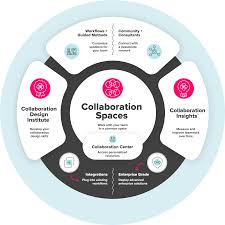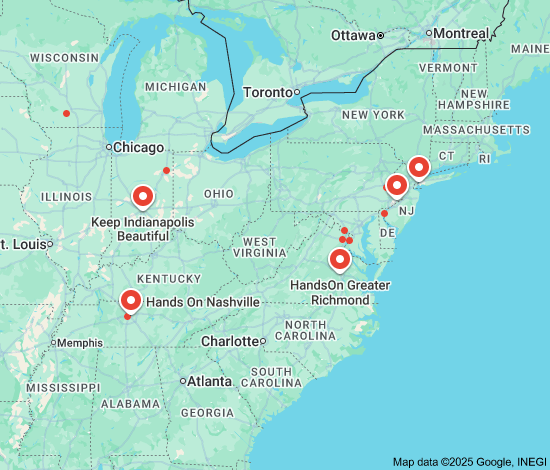Title: The Ongoing Struggle for LGBTQ+ Rights: A Journey Towards Equality
Introduction:
In recent decades, significant progress has been made in the fight for gay rights. However, the journey towards full equality and acceptance for the LGBTQ+ community is far from over. This article explores the historical context, milestones achieved, ongoing challenges, and the importance of continuing to advocate for gay rights.
Historical Context:
Throughout history, individuals who identify as gay or lesbian have faced discrimination, persecution, and marginalization due to societal norms and prejudices. Same-sex relationships were often criminalized and stigmatized. However, courageous activists have paved the way for change through their resilience and determination.
Milestones Achieved:
Over the years, numerous milestones have been reached in the pursuit of gay rights. The decriminalization of homosexuality in many countries marked a significant turning point. Landmark legal cases have fought against discrimination based on sexual orientation, leading to advancements such as marriage equality and anti-discrimination laws.
Marriage Equality:
The legalization of same-sex marriage stands as one of the most notable achievements in recent times. It symbolizes a recognition of love and commitment irrespective of gender identity or sexual orientation. This milestone has granted countless couples access to legal protections, benefits, and societal validation.
Anti-Discrimination Laws:
Many countries have implemented legislation to protect LGBTQ+ individuals from discrimination in various aspects of life. These laws aim to ensure equal treatment in employment, housing, healthcare services, education, and public accommodations. They provide a crucial framework for challenging prejudice and fostering inclusivity.
Ongoing Challenges:
Despite these advancements, challenges persist on the path toward full equality. Hate crimes targeting LGBTQ+ individuals continue to occur worldwide. Discrimination can still be experienced in various forms – from workplace bias to denial of services based on sexual orientation or gender identity.
Global Disparities:
While some nations have made significant strides towards recognizing gay rights, others lag behind. In many parts of the world, homosexuality remains criminalized, and LGBTQ+ individuals face severe persecution and violence. It is crucial to acknowledge these global disparities and support initiatives that strive for international equality.
Importance of Advocacy:
To achieve true equality, ongoing advocacy is vital. Allies and members of the LGBTQ+ community must continue to raise awareness, challenge prejudices, and advocate for comprehensive legal protections. Education plays a pivotal role in dispelling stereotypes and fostering acceptance.
Promoting Acceptance:
Creating a society that fully embraces diversity requires efforts from all corners of society – from families, educational institutions, workplaces, religious institutions, to policymakers. Promoting acceptance through dialogue, visibility, and representation can help break down barriers and foster understanding.
Conclusion:
The fight for gay rights has come a long way but still faces significant challenges worldwide. Achieving full equality requires continued advocacy efforts, legislative reforms, and societal change. By working together as allies and advocates for justice, we can build a future where LGBTQ+ individuals are celebrated for who they are – where love knows no boundaries or discrimination based on sexual orientation or gender identity.
Frequently Asked Questions About Gay Rights: Creating LGBTQ Inclusivity, Understanding SOGIE, Challenges Faced by LGBTQ Students, and the LGBT Subculture
- How do you make LGBTQ feel welcome?
- What does sogie mean?
- What challenges do LGBTQ students face?
- Is LGBT a subculture?
How do you make LGBTQ feel welcome?
Creating a welcoming and inclusive environment for LGBTQ+ individuals is essential to fostering acceptance and promoting equality. Here are some ways to make LGBTQ+ individuals feel welcome:
- Education and Awareness: Educate yourself about LGBTQ+ identities, terminology, and issues. By increasing your understanding, you can better support and empathize with LGBTQ+ individuals.
- Respect Pronouns and Names: Use the correct pronouns and names that individuals prefer. Respecting their gender identity is crucial in creating an inclusive space.
- Active Listening: Practice active listening when engaging in conversations with LGBTQ+ individuals. Give them space to share their experiences, concerns, and perspectives without judgment or interruption.
- Avoid Assumptions: Do not assume someone’s sexual orientation or gender identity based on appearance or stereotypes. Allow individuals to self-identify and respect their personal journey.
- Language Matters: Be mindful of the language you use, avoiding derogatory slurs or offensive jokes targeting LGBTQ+ individuals. Use inclusive language that acknowledges diverse identities.
- Supportive Policies: Advocate for policies that protect LGBTQ+ rights in your workplace, school, or community organizations. Support initiatives like non-discrimination policies, gender-inclusive restrooms, and equal access to healthcare.
- Provide Resources: Offer resources such as books, articles, podcasts, or support groups that address LGBTQ+ issues and experiences. This can help create a supportive network for those seeking information or seeking a sense of community.
- Celebrate Diversity: Embrace diversity by celebrating Pride Month or other LGBTQ+-related events in your community. Participate in activities that promote inclusivity and show solidarity with the LGBTQ+ community.
- Challenge Homophobia and Transphobia: Speak up against discrimination when you witness it happening around you. By challenging harmful attitudes or behaviors, you create a safer space for everyone.
- Be an Ally: Show your support by being an ally to the LGBTQ+ community. Attend LGBTQ+-led events, participate in advocacy efforts, and stand up for equal rights. Allies play a crucial role in creating an inclusive society.
Remember, creating an inclusive environment is an ongoing process. It requires continuous learning, self-reflection, and an open mind. By actively working towards inclusivity and acceptance, you can help make LGBTQ+ individuals feel welcome and valued in all aspects of life.
What does sogie mean?
SOGIE stands for Sexual Orientation, Gender Identity, and Expression. It is an acronym used to encompass the diverse aspects of a person’s sexual orientation, gender identity, and how they express themselves.
Sexual orientation refers to an individual’s emotional, romantic, and/or sexual attraction to others. It can include categories such as heterosexual (attraction to the opposite gender), homosexual (attraction to the same gender), bisexual (attraction to both genders), or other identities along the spectrum.
Gender identity refers to a person’s deeply felt sense of their own gender, which may or may not align with the sex assigned at birth. Some individuals identify as male, female, or non-binary (neither exclusively male nor female). Gender identity is personal and can vary from person to person.
Gender expression refers to how individuals present their gender through behavior, clothing, hairstyles, and other outward expressions. It is not necessarily tied to one’s biological sex or gender identity.
The term SOGIE is often used in discussions surrounding LGBTQ+ rights and inclusivity, recognizing that individuals have diverse experiences and identities related to their sexual orientation, gender identity, and expression.
What challenges do LGBTQ students face?
LGBTQ students face a range of unique challenges that can impact their educational experiences and overall well-being. These challenges can vary depending on factors such as cultural context, geographical location, and school environment. Here are some common challenges faced by LGBTQ students:
- Bullying and Harassment: LGBTQ students often experience higher rates of bullying, harassment, and discrimination compared to their heterosexual peers. This can occur in the form of verbal abuse, physical violence, cyberbullying, or exclusion from social activities. Such mistreatment can have detrimental effects on their mental health and academic performance.
- Lack of Acceptance: Many LGBTQ students struggle with a lack of acceptance from their peers, teachers, and even family members. This lack of acceptance can lead to feelings of isolation, low self-esteem, and a sense of not belonging.
- Mental Health Concerns: LGBTQ students are more likely to experience mental health issues such as depression, anxiety, and suicidal ideation due to the stressors they face related to their sexual orientation or gender identity. The stigma surrounding being LGBTQ can contribute to these mental health challenges.
- Discriminatory School Policies: Some schools may have policies that explicitly or implicitly discriminate against LGBTQ individuals. These policies may restrict access to resources like gender-neutral restrooms or prevent same-sex couples from attending school events together. Such policies create an unwelcoming environment for LGBTQ students.
- Lack of Inclusive Curriculum: Many educational systems lack inclusive curriculum that covers LGBTQ history, literature, or contributions to society. This omission erases the experiences and contributions of LGBTQ individuals and reinforces heteronormative perspectives.
- Limited Support Systems: Some schools may lack adequate support systems for LGBTQ students such as Gay-Straight Alliances (GSAs), counseling services specifically trained in LGBTQ issues, or faculty members who are knowledgeable about the needs of these students.
- Home Environment: For some LGBTQ students, their home environment may be unsupportive or even hostile. This lack of support can create additional stress and negatively impact their ability to focus on their education.
Addressing these challenges requires a multi-faceted approach. Schools can implement comprehensive anti-bullying and anti-discrimination policies, provide inclusive sex education, offer support groups and counseling services, and foster a safe and accepting environment for all students. Additionally, educating teachers, administrators, and staff about LGBTQ issues can help create a more inclusive educational experience for LGBTQ students.
Is LGBT a subculture?
Yes, the LGBT (lesbian, gay, bisexual, and transgender) community can be considered a subculture. A subculture is a group of people within a larger culture who share common interests, values, and behaviors that distinguish them from the dominant culture. The LGBT community has its own unique identity, history, social norms, and cultural practices that set it apart from mainstream society.
The LGBT subculture encompasses a diverse range of individuals who identify as lesbian, gay, bisexual, or transgender. It includes various communities within it such as LGBTQ+ youth, LGBTQ+ people of color, and LGBTQ+ individuals with different religious or cultural backgrounds. These communities often share similar experiences related to sexual orientation and gender identity.
LGBT subculture is characterized by its support networks, social spaces (such as gay bars or pride events), cultural expressions (such as literature or art), symbols (like the rainbow flag), language (such as queer terminology), and shared experiences related to coming out and navigating societal attitudes towards sexual orientation and gender identity.
It is important to note that while the LGBT community can be considered a subculture because of its distinct characteristics and shared experiences, it is not monolithic. There is diversity within the community in terms of race, ethnicity, socioeconomic status, religion, age, and more. Additionally, not all individuals within the LGBT community may identify strongly with or participate in all aspects of the subculture.




Leave a Reply